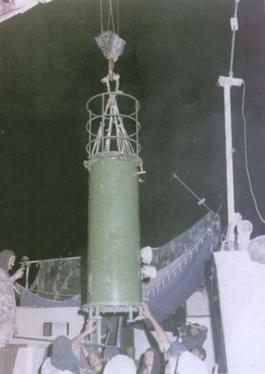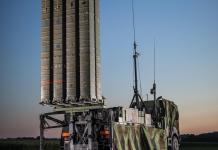In his just-released book Vajpayee: The Years that Changed India, retired bureaucrat Shakti Sinha, who had worked with the late BJP legend, first as a secretary to him as the leader of the Opposition (1996-97) and later as his private secretary when he became the Prime Minister (1998-99), has said that more than technological failure it was the intelligence/analytical lapse on the part of the Americans in detecting India’s nuclear explosions on May 11, 1998, at Pokhran deserts in Rajasthan.
The popular theory about the explosions, which made India a nuclear weapon state, was that had the Americans detected the planning for the test, they would have exerted enough diplomatic and economic pressures on the Vajpayee government to abandon its plan.
After all, the Americans had succeeded in doing this when, and it is an open secret in strategic circles, Washington had sighted similar preparations in December 1995 and forcefully expressed its alarm. Those protests led the then-Prime Minister P.V. Narasimha Rao to halt the preparations and cancel the planned nuclear test.
However, in 1998, the myth that American “spies in the sky” were infallible was exploded. Because, the US satellites, some of which cost more than $1 billion, took pictures with high-resolution cameras and eavesdropped on telecommunication with electronic ears, did not do the job.
The failure was also attributed to the both the Central Intelligence Agency and American foreign policymakers, with the then chairman of the Senate intelligence committee, Sen. Richard C. Shelby (R-Ala.) calling it ”the intelligence failure of the decade,” and the Director of Central Intelligence, George J. Tenet, asking retired Adm. David E. Jeremiah, a former Vice Chairman of the Joint Chiefs of Staff, to lead a 10-day investigation into the intelligence community’s failure to detect preparations at the test site in the Indian desert.
As the New York Times, dated May 13, 1998, reported, the Clinton administration officials defended their lack of knowledge and action by saying the Indian government had fooled them into thinking that it would not conduct nuclear testing. ”They didn’t just fool the C.I.A., they fooled the entire U.S. Government, and I’m the first to admit they fooled me, too,” a senior administration official said.
”We were all just lulled into thinking they wouldn’t do anything regarding nuclear weapons. They led us to believe they were not going to do anything precipitous. We made the mistake of assuming they would act rationally.” He added, ”We had no clue.”
But was it really a technological failure on the part of the satellites? Many believed so. Because the Indian scientists or technocrats had done a remarkable job by working during the nights to evade the satellite detections. But what was more important, they diverted the US, or for that matter the global, attention to the missile-testing range at Chandipur in Odisha.
In what was the build-up to the 37th test of the Trishul surface-to-air missile, the Defence Research Development Organisation (DRDO) moved more equipment than was required for the firing. It is believed that the apparatus put up at Chandipur resembled that of the Agni intermediate-range ballistic missile (IRBM). While the Chinese signals surveillance facility at Coco Islands was activated in anticipation of an Agni launch, it was the same build-up that led the US satellites to focus their cameras at Chandipur rather than Pokhran.
It was a brilliant strategic deception created by India. As a result, continued monitoring of the images which came of the activities at the Chandipur missile testing range led to complacency in the US National Security Agency, which was responsible for deciphering satellite surveillance. The Vajpayee government’s public reassurance all those days that there were no plans to go nuclear further led to this complacency.

In retrospect, however, it seems that there was not any technological failure. The American satellite had detected the evidence of the nuclear test preparations six hours before the tests, but the CIA did not issue any warning because the US analysts responsible for tracking the Indian nuclear program had not expected the tests and were not on alert.
They did not see the pictures until they arrived at work on the morning of May 11. As a result, President Clinton and other White House officials did not learn of the preparations until after the blasts had occurred, when news services carried accounts of a public acknowledgment by Prime Minister Vajpayee.
In his book, Shakti Sinha lends credence to the above theory. In the Chapter “The Ground Moves” and on page 109, he writes: “A few years after, when living in the US, I had it on good authority that the US State Department had done detailed discussion about whether Vajpayee really meant it when he said that India would test, and in a clear error of judgment, their conclusion was that he would not go-ahead.
“What would have been much more galling was that the US satellites had not detected the preparation in the Pokhran range. Again, I have it on good authority that the satellites had captured these images, but in the pre-artificial intelligence days, a manual examination was necessary to detect and analyze changes shown in satellite images. Remember that this was 1998, and even the cell phone was in its earliest, primitive! G days, with internet speeds measured in kilobytes”.
Follow EurAsian Times on Google News




